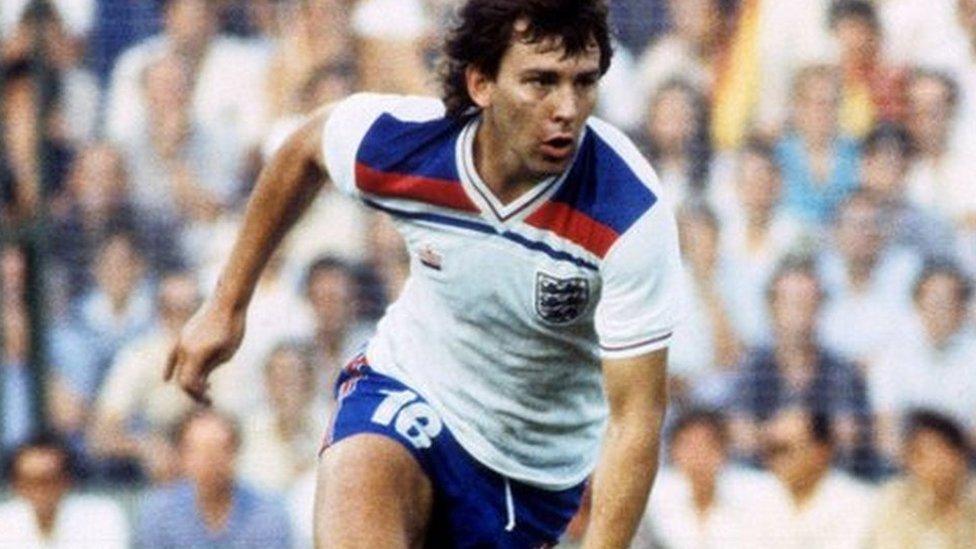Football shirts: 'People put such value on these bits of polyester'
- Published

Football shirt-collecting is surging in popularity and as a consequence prices are spiralling. Why do these tops inspire such interest - and could pressure to impress on social media be leading some fans into financial trouble?
"People put such a value on these bits of polyester," says collector Iain Bentley. "Not just in terms of money, but sentiment. There's a romanticism.
"You could say this used to be a niche hobby, but I think it's found its moment in the spotlight."
With an interest born out of spending time at home during the pandemic lockdowns, the 34-year-old is one of a seemingly ever-growing number of people whose love for football extends beyond the action on the pitch.
Competing with his wife for wardrobe space in their Teesside home, the Middlesbrough fan has about 50 shirts with the majority belonging to the team he has supported since watching them in the FA Cup final at Wembley a quarter of a century ago.
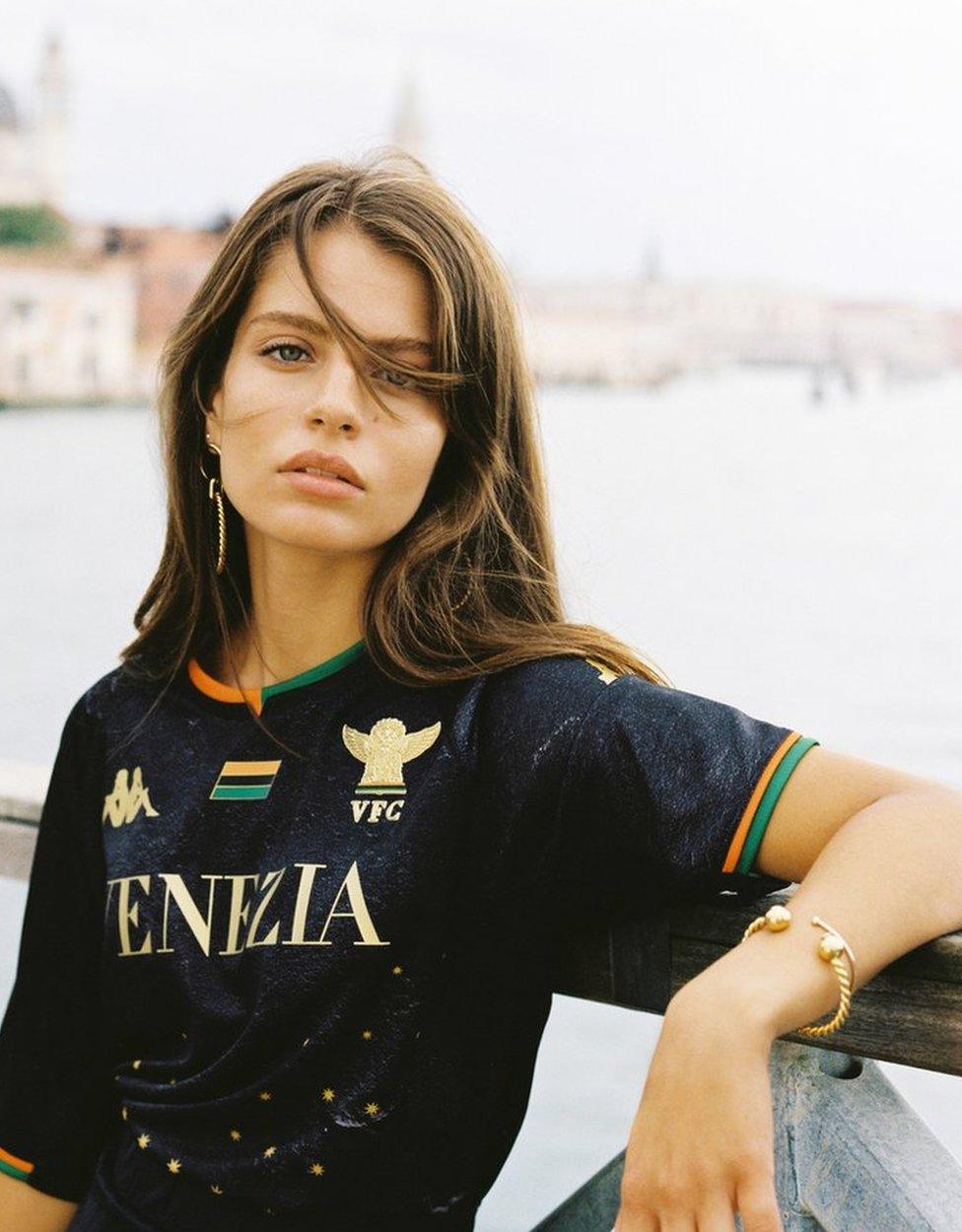
Although not one of Italy's biggest clubs, Venezia's elegant kits have raised its profile significantly
While he enjoys wearing many of his tops, Iain's rarer 1980s finds are too precious to risk damaging.
"I've run out of room, but I don't want to box my collection up as I like to look at them and put them on - although not the old classics. I've two young children and the thought of having yogurt splashed on them horrifies me!"
Fellow collector Phil Delves recalls the thrill of his first forays on to eBay, fresh out of university and with money to spend from his new job.
"I could pay 10 or 20 quid and get some really nice shirts from my childhood. I used to tell people it was like I was travelling the world as I'd pick up a shirt from a team in Bucharest or Buenos Aires. It quickly became a passion."
Just over five years later, the Liverpool supporter has a collection "hovering around 160 shirts" covering a mix of teams and eras.
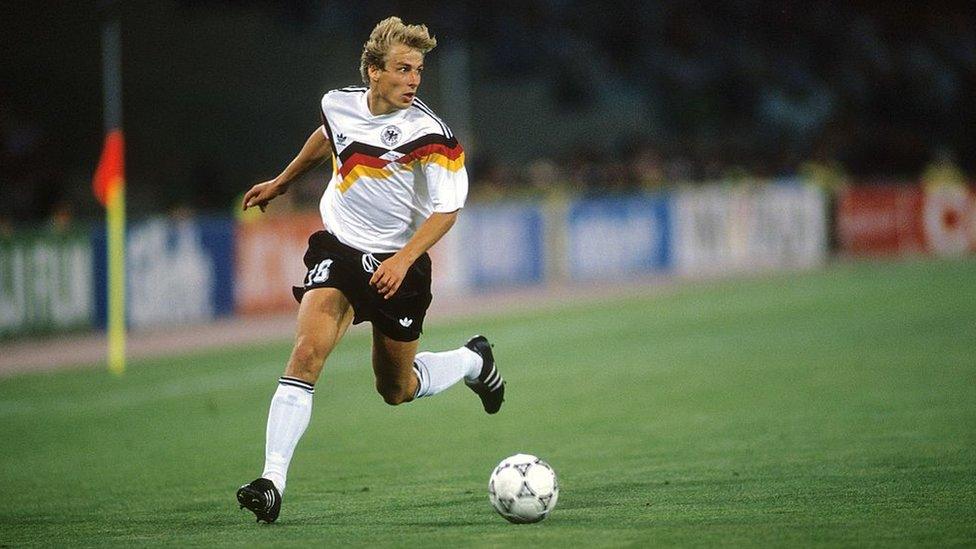
Incorporating their flag colours, West Germany's Euro 88 and Italia 90 shirt is considered to be one of the greatest
As with Iain's tops, many of Phil's are sharing a wardrobe with his wife's outfits, this time in Huddersfield.
Phil believes that something that was once viewed as a pastime for "geeks" is now beginning to be seen very differently.
"I think there's still a bit of a stigma. Some people look at shirts and think they're a bit childish, but I'd say that's an archaic view and I think the tide is turning. That's quite cool to see.
"Shirts appeal so much because they are an obvious symbol of a team or a player, but there's a bigger picture and almost any one will have stories attached to it beyond the obvious. They're so much more than a simple piece of clothing.
"Sometimes it's memories that are very personal, but even social and world history can be reflected, and patterns and designs echo the time they were made, so you'll see elements of the wider culture."
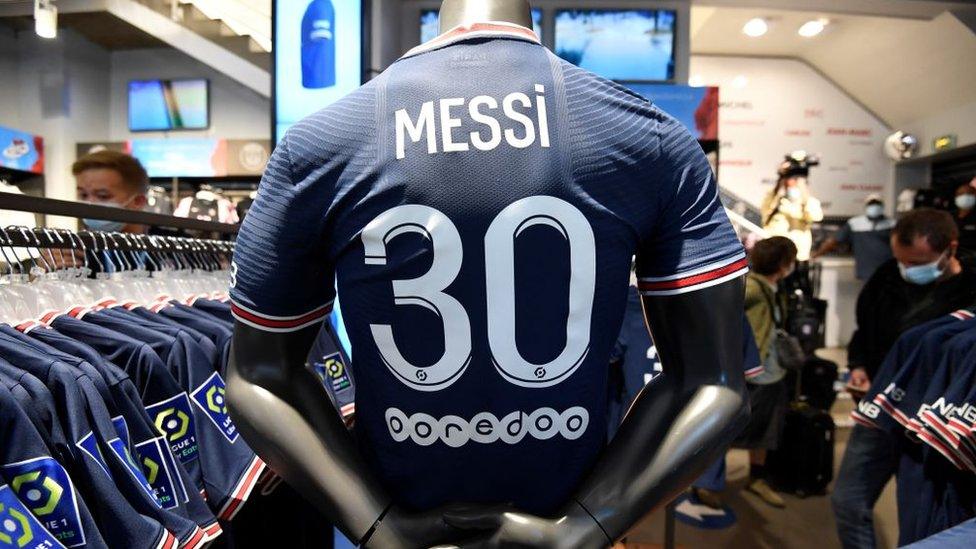
PSG sold 150,000 Lionel Messi shirts on the club website the day his signing was announced last August
While many collections are based around a favourite team, others focus on particular decades or even specific manufacturers like Adidas or Nike.
From the cheaper end of the market at just a few pounds, rare replicas from the 1970s, 80s and 90s can fetch several hundred pounds, with retailers such as Classic Football Shirts selling more than 300,000 jerseys annually.
While only the very wealthiest of enthusiasts would ever be able to afford the record-breaking £7.1m Diego Maradona "Hand of God" shirt that was recently auctioned by Sotheby's, deep pockets are nonetheless needed to outbid committed collectors in the "match-worn" section of the market, who regularly pay four and five-figure sums to secure items once donned by their heroes.
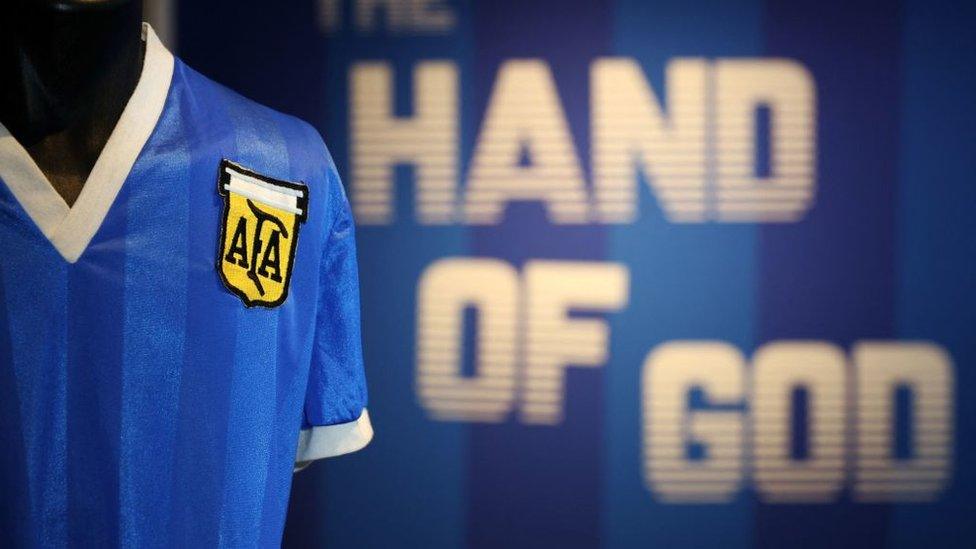
Diego Maradona's "Hand of God" shirt was worn by the superstar when he scored two of the most famous goals in history
The growth of social media has enabled fans across the globe to connect for discussions about new releases, and to buy, sell and swap tops via Twitter, TikTok and Instagram.
The "community", as Phil calls it, has even adopted its own terms and shorthand, with sought-after items often described as "grails" and YouTubers posting "unboxing" videos as they unveil their latest acquisitions.
With his More Than a Shirt magazine, as well as blogs and podcasts, the 28-year-old is among those creating content around the "endless well of stories" he says football tops have.
Iain has done likewise as founder of Kit Magazine, a print title dedicated to shirts. It has expanded online via regular podcasts "as a way to create a space where people can talk about their collections and the lengths they've gone to building them".
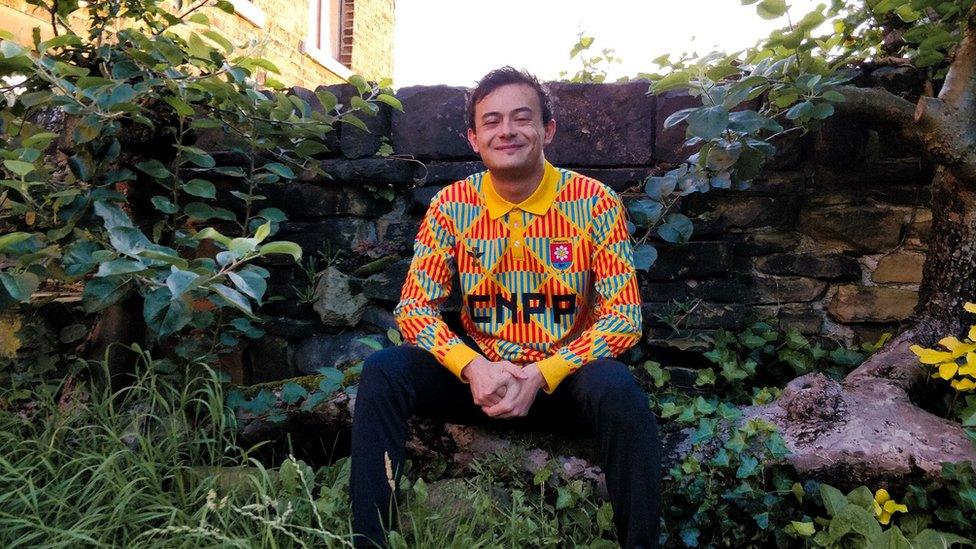
Writer and podcaster Phil Delves has a collection of some 160 shirts
Once viewed as an easy way to make money from impressionable young supporters, these shirts' shift to being items treasured by adults means they even feature in a football-focused exhibition currently running at London's Design Museum, external.
Lead curator Eleanor Watson explains how what started out as a way to distinguish between two teams has developed into "currency", communicating what type of fan someone is and their knowledge of the game.
"A football shirt carries a cultural legacy, knowledge and optimism in its very fibres. This evolution from equipment to elevated fashion item is physically manifested in the explosion of the replica shirt market.
"A love for a specific shirt is an acknowledgement of what has gone before - a crucial element in a culture where knowing your onions places you in high regard.
"A 1988 Netherlands shirt will reveal your adoration for Rinus Michels' Euros-winning side featuring Ruud Gullit, Ronald Koeman and Marco van Basten, whose audacious volley from the silliest of angles won the final.
"A 2002 Cameroon vest banned by Fifa because it lacked sleeves, but which was worn with a shirt underneath as an act of protest, might show your general love of a rebel or simply the striker Samuel Eto'o."
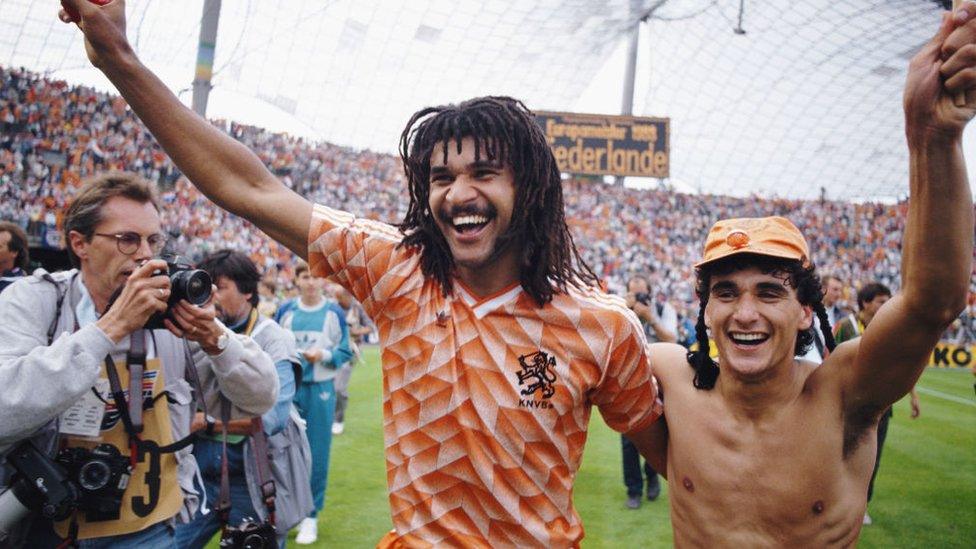
Aficionados view the hard-to-find 1988 Netherlands shirt as the "holy grail", with mint replicas selling for almost £1,000
Shirt-collecting is an increasingly expensive hobby, though. Prices for vintage tops have risen significantly while clubs routinely launch new kits every year, with many even releasing third and fourth strips or "special editions" to maximise revenue.
Counterfeit items being sold on the likes of eBay and Depop are also a pitfall to be wary of for the shirt-collector.
"It is an expensive hobby," Iain admits. "You might have been paying about £30 or £40 for an old Premier League shirt, but now you can be looking at upwards of 70 or 80."
Phil agrees: "I look back at what I paid when I started collecting in 2016 and 2017 and it's a huge jump. It's more than doubled for a lot of them."
He added: "There can also be a fear of missing out. It's not exclusive to shirts, but when it comes to social media there's a desire for popularity and likes. When people see one that's popular, sometimes they'll pick it up even if it means overspending just to feel like they're involved.
"It is an issue. There've been people in the community who've said, quite bravely, it's become an addiction so it's certainly something to be aware of. Hopefully that conversation doesn't stop and we can all help by encouraging a more healthy approach to collecting."
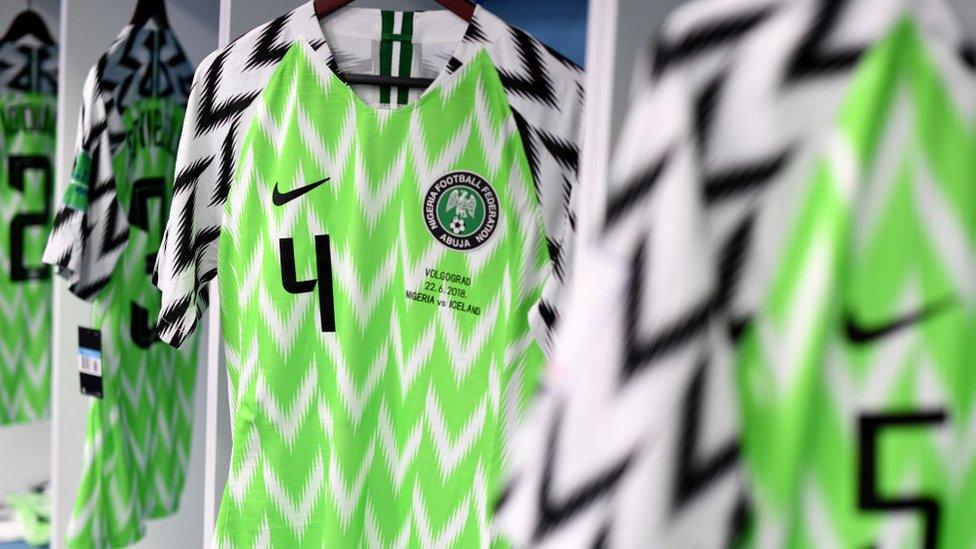
Nigeria's 2018 World Cup shirt was a major hit, with millions of replicas snapped up
Despite these issues, Phil sees no end to the popularity of the pastime.
"You don't need to have a certain number [to class it as a collection] and you shouldn't be going out spending a lot of money if you don't have it.
"You can enjoy shirts as a hobby even with just a few.
"And because it's accessible, so many people are getting involved. Ultimately, there's no sign of it slowing down any time soon."
Related topics
- Attribution
- Published26 May 2022
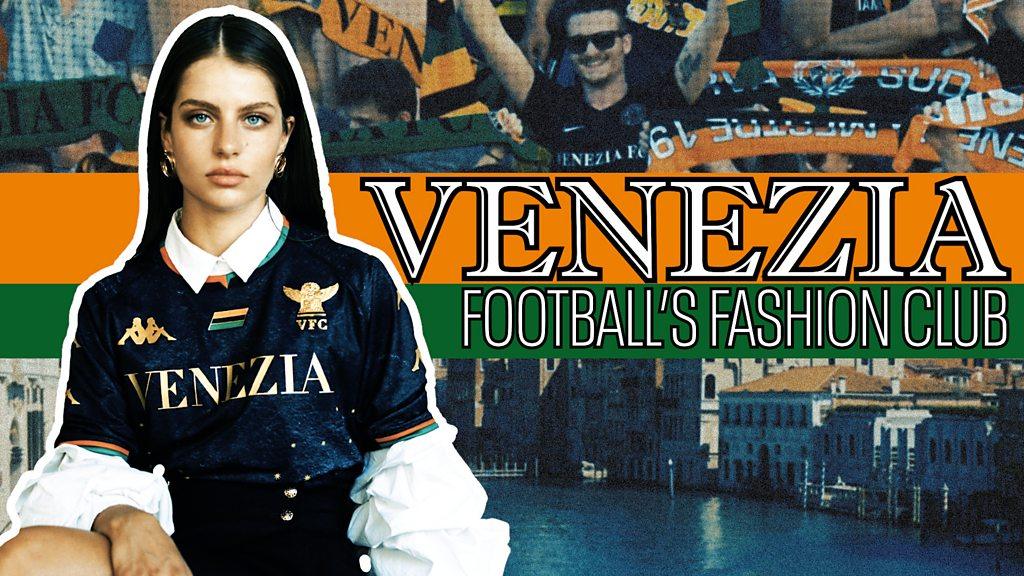
- Attribution
- Published4 May 2022
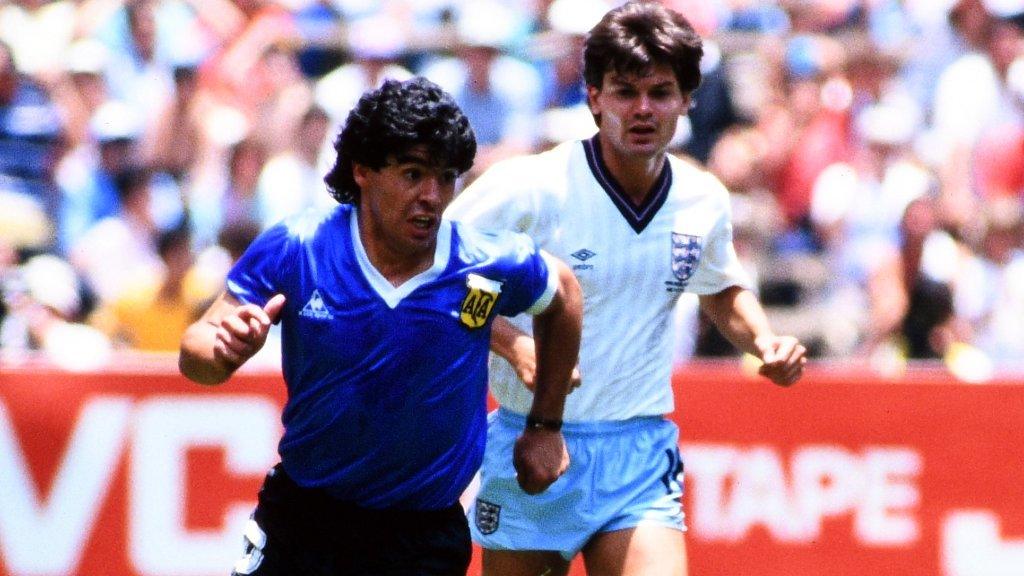
- Published13 May 2020
